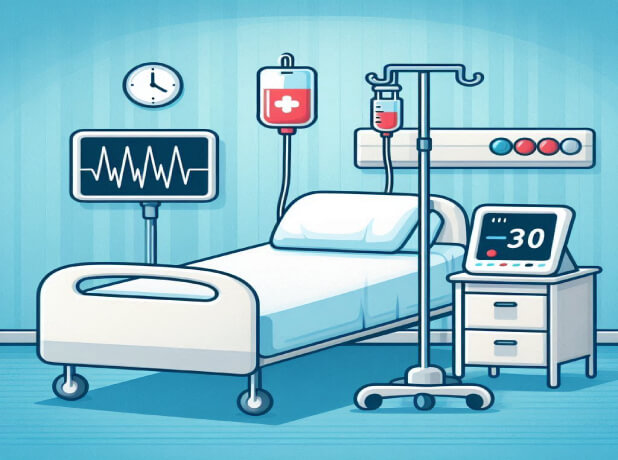Summary: “Macrophage Pyroptosis and its Crucial Role in ALI/ARDS”
Abstract Summary: This comprehensive review explores macrophage pyroptosis, a specific form of programmed cell death, and its pivotal role in the pathogenesis of acute lung injury (ALI) and acute respiratory distress syndrome (ARDS). Highlighting complex molecular pathways and inflammasome activation mechanisms, the authors detail the relationship between macrophage pyroptosis and exacerbated lung inflammation and damage, proposing various potential therapeutic interventions that target macrophage pyroptosis to improve clinical outcomes in ALI/ARDS.
Key Points:
-
Overview of ALI/ARDS: ALI/ARDS is characterized by severe respiratory distress, hypoxemia, and diffuse lung injury, resulting in mortality rates between 35-46%. Its development involves excessive immune responses triggered by pulmonary and extrapulmonary factors.
-
Definition and Mechanisms of Pyroptosis: Pyroptosis, distinct from apoptosis, is mediated by gasdermin proteins, resulting in membrane pore formation, cell swelling, and inflammatory cytokine release, crucially influencing immune responses and tissue damage in lung injury.
-
Role of Inflammasomes in Pyroptosis: Inflammasome activation (canonical via caspase-1; non-canonical via caspase-4/5/11) triggers pyroptosis through the cleavage of gasdermin-D, releasing pro-inflammatory cytokines IL-1β and IL-18, intensifying lung injury.
-
Macrophage Pyroptosis in Lung Injury: Macrophages, critical pulmonary immune cells, significantly contribute to ALI/ARDS pathogenesis through excessive activation and pyroptosis, worsening inflammation, cytokine storms, and tissue destruction.
-
Impact of Mitochondrial Dysfunction on Pyroptosis: Impaired mitophagy and mitochondrial dysfunction enhance macrophage pyroptosis via elevated reactive oxygen species (ROS) and inflammasome activation, exacerbating ALI/ARDS severity.
-
Exosomes in Macrophage Pyroptosis Regulation: Exosomes derived from polymorphonuclear neutrophils (PMNs) can aggravate pyroptosis by transferring inflammatory microRNAs; conversely, exosomes from mesenchymal stem cells (MSCs) inhibit pyroptosis, highlighting their therapeutic potential.
-
Neutrophil Extracellular Traps (NETs): NETs exacerbate macrophage pyroptosis and ALI/ARDS via AIM2 inflammasome activation. Targeting NET formation may thus mitigate inflammation and improve patient outcomes.
-
Post-translational Modifications (PTMs): Various PTMs, including ubiquitination and phosphorylation, critically regulate inflammasome and gasdermin protein activation, suggesting therapeutic targets for inhibiting pyroptosis in ALI/ARDS.
-
Therapeutic Approaches Targeting Pyroptosis: Emerging therapeutic agents such as melatonin, mesenchymal stem cell-derived exosomes, alpha-linolenic acid, and specific drugs (e.g., sacubitril/valsartan) demonstrate efficacy in reducing macrophage pyroptosis and attenuating ALI/ARDS severity.
-
Future Challenges and Research Directions: Current understanding of macrophage pyroptosis is incomplete. Clinical translation faces significant challenges due to limited preclinical evidence, complexity of delivery systems, potential off-target effects, and the need for robust clinical trials.
Conclusion: Macrophage pyroptosis significantly influences ALI/ARDS pathology, contributing to severe pulmonary inflammation and tissue damage. Targeting macrophage pyroptosis through various pharmacological and therapeutic strategies represents a promising avenue for improving clinical outcomes, though substantial challenges remain in clinical translation and practical implementation.
Watch the following video on “Dr. Lieberman: SARS-CoV – Monocyte and Macrophage Infection, Inflammasome Activation and Pyroptosis” by Human Immunome Project
Copyright © 2025 Cai, Shang, Zhou, Zhang, Li, Wang, Lin, Huang and Yang. This is an open-access article distributed under the terms of the Creative Commons Attribution License (CC BY). The use, distribution or reproduction in other forums is permitted, provided the original author(s) and the copyright owner(s) are credited and that the original publication in this journal is cited, in accordance with accepted academic practice. No use, distribution or reproduction is permitted which does not comply with these terms.

